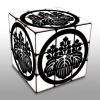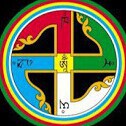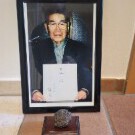-
Posts
947 -
Joined
-
Last visited
-
Days Won
25
Markus last won the day on September 28
Markus had the most liked content!
About Markus
- Birthday 06/23/1977
Contact Methods
-
Website URL
markussesko.com
Profile Information
-
Gender
Male
-
Location:
North Carolina / New York
Profile Fields
-
Name
Markus Sesko
Recent Profile Visitors
The recent visitors block is disabled and is not being shown to other users.
Markus's Achievements
-
-
In regards of the upcoming Dai Tōken Ichi (DTI), I was asked by a few readers if I can do another 50% off eBook sale, which I happily comply with ☺️ https://markussesko.com/2025/10/21/dti-ebook-super-sale-2/
-

What happens to collectons?
Markus replied to Peter Bleed's topic in General Nihonto Related Discussion
Basically, it boils down from my standard (non-translation related) consultation fee of $125/h. Has to make sense for both parties. For example, I would never dare to charge, let's say, $5k for a huge collection of objects, but which likely will only reel in $15k at the end of the day, that's not economically reasonable. It really depends on the breakdown @Hoshi posted earlier. -

What happens to collectons?
Markus replied to Peter Bleed's topic in General Nihonto Related Discussion
I have done this several times in the past as a paid professional service for higher-end collections. That is, collectors were paying for the flight, two nights in a nearby hotel, with a prior discussion about number of objects and desired level of detail so that I was able to give a rough quote in advance. Pictures, and as many notes as possible taken on the ground, then compiled a folder or booklet of the collection back home, including rough estimates, comparables, etc., from past auctions and other sales, for example.- 57 replies
-
- 10
-

-

-
The cited part is from a comment, not from my article.
-
To be honest, I don't know 😇 I have moved away much from the metallurgical/making view in the Japanese arms and armor world over the last years. Would love to dig back in, but I am lacking the metallurgical education on the one hand, and on the other hand, also wouldn't have the time to do so if I wanted, so I want to leave that aspect to others. Edit: A friend of mine visited Ian last year and said he was doing alright.
-
@Brian Are you referring to my article or to Ian's comment to it Dan quoted here?
-
Readind romanji instead of romaji (rōmaji), its already a red flag. https://english.stackexchange.com/questions/301873/why-is-romaji-so-frequently-spelt-as-romanji
-

The Japanese Sword - Yamashiro Edition by Tanobe Michihiro is now available
Markus replied to nulldevice's topic in Nihonto
These books are not related to my own online Gokaden series, they are translations of Tanobe Sensei's books on the same topic, as Brano pointed out. Bizen I (Osafune School) has been translated by me and submitted, and I think the publisher Me no Me has it scheduled for spring of 2026. I am meeting with them in Japan in two months and discuss the future volumes, based on the way Tanobe Sensei is comfortable with continuing writing them (and has made progress so far).- 25 replies
-
- 14
-

-

-
-
I think that the mystery is actually easier to solve as I think I have found the entry in question: "In addition, Kôzan oshigata has a record of a blade having a date in the Enkei (延慶) era (1308)" The entry just references "a date in the era," but then only gives the starting year of that era, 1308, not the actual year the blade is dated with. If the entry is amended as follows, everything makes sense: "In addition, Kôzan oshigata has a record of a blade having a date in the Enkei (延慶) era (1308–1311)"
-

... little help from my friends ...
Markus replied to Bruce Pennington's topic in Translation Assistance
I also tend towards Kanezumi (兼住). Have to admit, when I first saw the signature, I had a hunch towards Kanekaze (兼風) as there is a very similar cursive way to write the KAZE character. However, I don't have a WWII era Kanekaze smith in my records, only later knife makers using that name. There is always the possibility of rare (Kanekaze) knife/blacksmiths making some swords at that time as that did happen, but, Occam's razor, I tend towards Kanezumi. -
I would like to quote from Tanobe Sensei's latest book on the Yamato tradition, where he elaborates a bit more on the Boston tantō that has bee mentioned: There was more than one generation Norinaga, and descendants of the first master continued to use this name until the Muromachi period. Period sword texts state that short signatures of the type “Yamato Norinaga saku” (大和則長作, “made by Norinaga from Yamato”) go back to the hand of the first generation, and such with longer signatures, containing the character Kunias in “Yamato no Kuni” (大和国, Yamato province) and prefixes like “Shikkake” and/or the honorary title Sakon no Jō (左近允) go back to the second generation, or possibly to later generations as well. The collection of the Museum of Fine Arts, Boston, contains a tantō (picture 1) that is depicted in the Kubikiri Asa’emon Tōken Oshigata (首斬り浅右衛門刀剣押形) and that is signed and dated: “Yamato Shikkake Norinaga yonjūhachi saku – Bunpō sannen tsuchinoto-hitsuji sangatsu tōka” (大和尻懸則長四十八作・文保三年己未三月十日) – “Made by Shikkake Norinaga from Yamato, age 48, on the tenth day of the third month Bunpō three (1319), year of the sheep.” In addition, there exists a tantō dated Ryakuō three (暦応, 1340), which is inscribed with the information that it was made when the smith was 69 years old. Accordingly, we can calculate Norinaga’s year of birth as Bun’ei nine (文永, 1272). When we follow the aforementioned period sources in terms of signature syntax, both tantō would be works of the second generation, meaning that the active period of the first generation obviously must be placed earlier than the two dates in question. When we examine the workmanship of a Jūyō-Bunkazai tachi signed “Yamato no Kuni Shikkake-jū Norinaga saku” (大和国尻懸住則長作, “Made by Norinaga resident of Shikkake in Yamato province”) (picture 2), and a tachi ranked Tokubetsu-Jūyō Tōken signed “Yamato Sakon no Jō Norinaga saku” (大和左近允則長作, “Made by Sakon no Jō Norinaga from Yamato”) (picture 3), and compare that to blades signed briefly “Yamato Norinaga saku,” the former do not date any later then the latter. In addition, the signature of both groups of works is fairly close, whereupon I tend to think that the period sources should be revised.
-
DENihontocollector started following Markus
-
I was pointed out to this thread to comment. As written in the preface to my publication: "Point (3) lists the handed-down artistic period where this date has to be taken with a grain of salt. Some dates are based on extant dated signatures and are more or less accurate, but most of them were transmitted again and again over the centuries with the initial listings often simply based on hearsay." What I am trying to say is that all of that is piling on and piling on atop of surviving period sources. There is re-assessment necessary on all levels, no exception. And that is where we are right now.














